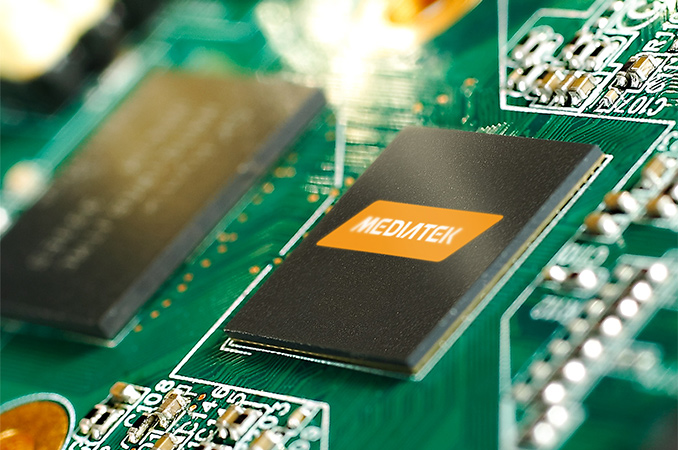MediaTek Reveals MT2621 SoC for IoT: Arm7 MCU, Integrated GPRS/NB-IoT Modem
by Anton Shilov on November 30, 2017 1:00 PM EST
MediaTek this week announced a new SoC designed for ultra-low-power autonomous IoT applications such as wearables, security sensors, and similar devices. The MT2621 SoC integrates basic computational capabilities, a modem that supports GSM/GPRS and NB-IoT, and a number of input/output interfaces.
The MediaTek MT2621 features an Arm7 MCU featuring one core running at 260 MHz, 160 KB of SYSRAM and 4 MB of SIPRAM for microcontroller applications that do not require substantial computational resources or memory. To connect to the outside world, the MT2621 integrates a modem DSP, a wideband module (that supports ultra-low/low/mid bands defined by the 3GPP Rel-14), RF capabilities, and even an antenna that can work over existing GSM/GPRS (as well as upcoming NB-IoT networks). The SoC supports dual standby functionality and can work over both networks simultaneously. To connect to local wireless peripherals, the MT2621 can use Bluetooth 4.2. The chip also has an LCM interface to attach LCDs, an interface for a camera, and audio interfaces to connect a speaker and a microphone.
UPDATE 12/1: MediaTek has clarified that the MT2621 uses an ARM7 core, not an ARMv7 one as it initially said in the press release.
The highly integrated design of the MT2621 allows device manufacturers to reduce the number of additional components to a minimum, which simplifies development cycles and lowers BOM costs. Furthermore, the MCU is being promoted as being power-efficient, which would enable a long battery life, which is crucial for battery-driven applications, including health/fitness trackers, IoT security sensors, smart meters and industrial equipment. Device manufacturers will also have to write their software for the MT2621 that can run a customized MCU-variant of Linux, but naturally not Android or similar operating systems.
MediaTek did not disclose which manufacturing technology it plans to use to produce the MT2621 on, but given rather modest compute capabilities of the chip (as well as target applications), the SoC will likely be made using an inexpensive low-power planar fabrication process. As for the availability timeframe, it depends on the developers of actual hardware. Typically, the development of low-power devices does not take too long, but then it can take months to validate these products and ensure everything works properly. Interested parties will need to contact their local Mediatek representatives for more information.
Related Reading
Source: MediaTek










3 Comments
View All Comments
arnd - Thursday, November 30, 2017 - link
The product link says "ARM7", not "ARMv7", and that is a big difference. Mediatek has been using ARMv5 based ARM7E core a while, so I would guess this one is similar.MrCommunistGen - Thursday, November 30, 2017 - link
It looks like there's a disconnect between MediaTek's marketing and engineering teams. The descriptions at each of the linked MT pages (one a press release and the other the actual product page) *say* ARMv7 in their text, but the table on the product page says ARM7.Since no performance metrics are given it is really hard to guess which they actually mean. Based on the clock speeds I'd guess they actually mean ARM7 since a lot of the older designs don't clock very high, but they could theoretically be running an ARMv7 core of some sort at really low clock speeds as well... There just isn't enough definitive information in those two source documents.
Ian Cutress - Friday, December 1, 2017 - link
Mediatek got in touch with us and said there was a mistake in the materials. We're getting clarifications and will update.